The Humboldt County Historical Society will launch Two Peoples, One Place with a reception at the Humboldt County Library on Saturday, Oct. 13, at 1 p.m. Authors Ray Raphael and Freeman House will be on hand to speak and to sign copies of the book, which will be available for sale ($29.95). The Humboldt County Library’s Main Branch is located at 1313 3rd St., Eureka.
One of the first things you learn in Two Peoples, One Place is that for nearly 200 years, from 1600 up until 1776, Europeans had known about the area that was to become Humboldt County. By and large, they simply chose to avoid it. To some, the land represented disease and death.
“Every year when those who sail from the Philippines to New Spain come in sight of the neighborhood of Cabo Mendocino or in that latitude, a very severe sickness seizes them,” wrote a seagoing priest at the turn of the 17th century. “It is this which causes the death of those who die on that route, there being years when hardly a person is left on the ships to manage the sails ...”
Such is the stuff of history in the Americas — the Spaniards avoided the North Coast because they hadn’t yet figured out that the lack of fresh vegetables after a long voyage was the cause of scurvy, not the dark and haunted land off their bow. And that piece of luck, with a bit of help from a rocky shore and poor natural harborage, was why Native American peoples here were able to live their lives undiminished just six generations ago.
With Two Peoples, One Place , local historian Ray Raphael, with some help from his colleague Freeman House, has given the first comprehensive account of the first of those generations, as well as what came before. And he does so in the deeply human and all-inclusive style he first pioneered in his An Everyday History of Somewhere , an early attempt at writing Humboldt County. In his first book, the story was told partly through the eyes of raccoons and elk and such. Here, the challenge is to tell Humboldt County history through two broad and widely divergent points of view: that of the people who had inhabited the area for millenia, and that of the Europeans who came here to seek riches.
Early in the book, Raphael and House try to give an account of the prehistorical geology and settlement of the land that would come to be known as Humboldt County. They do so from two points of view: that of modern science, and that of indigenous religion or folklore. Plate tectonics and the Yurok woge, who created humans by throwing sand this way and that, are given equal billing. You get the authors’ point — if we want to understand the story, it’s important to understand the native peoples’ world view — but still it feels like a bit of politically correct gimmickry. At first.
As the story gets going, though, the European conquistadors and settlers come to seem far more alien to the modern reader than the Yurok, Hupa, Wiyot, Karuk, or the many other people indigenous to this coast, many of them mostly forgotten now. Raphael relays the coming of a Spanish expedition in 1775, as recorded in the diaries of one of its members. After anchoring at Trinidad Head and becoming acquainted with the residents of the Yurok village of Tsurai, Capt. Bruno de Hezeta of the Sonora presents the natives with a speech, of which they presumably understand not a word:
In a loud voice the commander said that in the name of His Majesty, King Charles III, our Lord ... he was taking, and took, was seizing, and seized, possession of this land, where at present he was disembarked and which he had discovered, forever and ever, in the Royal name and that of the Royal Crown of Castile and León ...
And as a sign of possession ..., drawing the sword that he had on his waist, with it he cut trees, branches, and grasses, and moved stones, and walked up and down the fields and the beach without any hostile resistance. He asked those present to be witnesses and instructed me, Juan Gonzales who am the scribe named by the commandant of this expedition, to put it in public form as testimony.
It’s a testament to the skill of Raphael and House that without really noticing it, we experience this odd scene — Hezeta’s incantory speech and his mystifying actions — in much the same way that the residents of Tsurai must have experienced it: as something like the rantings of a madman. The substance of Hezeta’s speech is made of the same fantastic stuff as Yurok creation stories, but with a driven, dangerous twist. The moment frames the entire story, in a way, as the “two peoples” of the title meet and eventually go to war. The natives never quite understand the invaders. The invaders certainly never understand the natives. They seem to prefer it that way.
For a while, the narrative turns from the meeting of the “two peoples” and to the vicious, internecine scheming of the settlers, who had been primed by the California Gold Rush to expect an earthly fortune lurking around every bend. The rush was on to Humboldt Bay in the 1850s, and various parties fully expected to found whole new San Franciscos in its wilds. The stakes were high. Perhaps all that effort spent cheating one another found its natural outlet in the eventual wholesale slaughter of the Indians.
The book lists 56 individual massacres of indigenous peoples in the 1850s and 1860s. Some of them, like the massacres at Indian Island and Burnt Ranch, are well known. Most of them have been forgotten. Throughout much of Southern and Eastern Humboldt, whole ways of life disappeared. But the book acknowledges that not everything that was had passed from here. The last chapter shows how tribal people were able to pick themselves back up after the genocide, rebuilding at least some of what had been lost.
There’s plenty of minor gems in the book, such as the little-known fact that Russian fur traders had explored and mapped Humboldt Bay back in the early 1800s, naming it the “Bay of Rezanov.” This was 50 years before the first American rush on the area, at which time there was great debate over whether it was even possible to bring ships into the bay. There’s a persuasive evocation of Josiah Gregg, the man who led the first overland expedition to the bay — a would-be scholar and Renaissance man at loggerheads with the hard characters who made up the rest of his party. Gregg met a mysterious end after leaving Humboldt Bay; many of the others came back and made their fortunes.
But the book’s many entertaining bits of trivia are just sauce. In the end, Two Peoples, One Place provides a deep and level-headed look at the origins of our little society, which, if dated from the coming of the white man, is one of the youngest places in North America, and still one of the oddest. It’s worthwhile to remember that it was first forged in blood and ignorance and misunderstanding.
— Hank Sims
Above: Photo of pioneer Seth Kinman and painting of Wiyot elder Ki-we-lah-tah courtesy of the Clarke Historical Museum.
Jedediah Strong Smith
Excerpts from Two Peoples, One Place
Sketch of Jedediah Strong Smith, drawn by a friend shortly after Smith's death.From Two People, One Place.
In the spring of 1828 Jedediah Strong Smith led a party of 18 men and 300 horses and mules north from San Jose towards Oregon. (Contrary to popular belief, the mountain men did not travel light.) Smith hoped to establish a trading post somewhere between San Francisco and Fort Vancouver. Possibly, this would be at “Port Trinity,” which started appearing on maps in the 1790s in the wake of the Hezata and Vancouver expeditions. (1) The Smith party followed the Sacramento River until the present site of Red Bluff, then turned abruptly to the west. They crossed the mountains to the South Fork of the Trinity River, then turned north to the Hoopa Valley. Before reaching the confluence of the Klamath and Trinity rivers they turned toward the west, skirting the hills on the left bank of the Klamath. (Because they never saw the Klamath and Trinity come together, maps for the next quarter of a century showed the Klamath Lakes draining into Oregon rather than joining with “Smith’s River,” which later became known as the Trinity.) After sighting the Pacific on May 20 they retreated inland, for the dense redwood forest offered little in the way of game or forage. They crossed the Klamath with the help of Indians, ventured downstream to the coast, then headed north to the present site of Crescent City.
The presence of Smith’s party created something of a stir among the indigenous population. What a spectacle it must have been, this odd assortment of Americans, Englishmen, Scotsmen, Irishmen, French-Canadians, French Creoles, and an African-American trying to make their way along whatever trails they could locate in the woods. “Picture these hardy men,” wrote one historian, “clad in fringed buckskin and moccasins. Around the waist a strong belt held a knife, pistols, shot pouch, powder horn, and leather bags containing pipe, tobacco, beaver lure, flint and steel, small tools, keepsakes and small essentials. In the hand of each rested the trusty rifle.” (2)
Even that was only the beginning. Local inhabitants were probably more shocked by 300 creatures as large as elk trailing along, undoubtedly the largest single assemblage of large mammals they had ever seen. These horses and mules, laden with provisions, camp supplies, and beaver skins, stumbled over roots and rocks as the metal pots and beaver traps strapped to their bodies clanked incessantly, causing the woods to resound with sounds the people had never heard.
Into the twentieth century, local people were still talking about it. Smith and one of his men, Harrison G. Rogers, kept journals; the Hupa, Yurok, and Tolowa recorded the event through the spoken word, one generation to the next. Here is one drama from two perspectives, a documentary record of the Smith expedition through the Northwest corner of California in 1828.
*Quoratem village, by George Gibbs.
From* Two People, One Place.
Smith Expedition Version
May 7... Several indians came to camp in my absence. They appeared friendly and made signs that they wished to trade Deer Skins for Axes & knives. Indian trails were becoming large and lodges ... more plenty than in the country through which we had for some time been traveling. I saw several places in the course of the day where there had been axes used.
[May] 8th... In the morning several indians came to camp different from the indians I had before seen in the country, particularly in their dress and in the length of their hair which was long... These indians were clothed in Deer Skins Dressed with the hair on. The lower part of the body was left naked. Some of them had Mockasins. Their lodges were tolerably numerous and they had a few good canoes.
— Jedediah Smith, on his first day in Hoopa Valley. (3)
Indian Version
It was winter when they heard they were coming from the south. ‘Let us make a dance or do something else,’ they said. ‘Something is coming.’ Then they heard that they had already reached Southfork. Southfork men ran down to Medildin [Me’dil-ding] and told them that the strangers did no harm. They came down to Medildin and camped for the night on the other side above the village. There they bought bear, fox, and coon hides, giving hatchets and knives for them. They came down here to Sauwtitcdin and camped on the north side of the creek. We ran away from them down into the canyon. They went on and spent the next night at Bloody camp. Then they say they went on crossing Pine creek at Martin’s Ferry. They went over the Bald Hills coming out to the ocean at the mouth of the Klamath.
— McCann, “a white-haired old man” who said he was a child at the time, to Pliny Goddard in 1902. The story was told in the Hupa language and translated by Goddard. (4)
*Sketch of woman and child by
George Gibbs, on the McKee Expedition.*
From Two People, One Place.
Smith Expedition Version
Saturday, May 24th.... [E]ncamped within 100 yards of Indian Scalp river [the Klamath-Trinity], on the side of the mountain where there was plenty of good grass for our horses. Capt. Smith went down to the river, where there is a large Indian village on the opposite side, and called to the Inds., and there were 4 crossed over, 2 men, 1 woman and a boy about 12 or 14 years of age, and came to camp with him; he made them a present of a few beads....
Sunday, May 25. As is usual when traveling, we was up and made an early start, directing our course N. E. about 1 mile and struck Ind. Scalp River opposite to an Ind. village, and got the Inds., with there canoes, to cross our plunder and selves. We drove in our horses, and they swam across, where they had to swim from 250 to 300 yards. We give those Inds. that assisted in crossing our goods, beeds and razors for their trouble; there was a number visited our camp in the course of the day, men, women, and children; some brought lamprey eels for sale; the men bought them, giving beeds in exchange. Those Ind. live in lodges built similar to our cabins, with round holes about 18 inches in diameter for doors... We cannot find out what those Inds. call themselves; the most of them have wampum and pieces of knives. Some have arrow points of iron; they also have some few beaver and otter skins. Mr. Smith purchases all the beaver fur he can from them. The foundation of their lodges are built of stone with floors; they appear quit affraid when we first reached the river and called to them, but, after coakesing, one came across with his canoe, and showing him by signs what we wanted, he soon complyed, and called to others who came with canoes and comm. X [commenced crossing] our goods. Deer killed today; the meat all poor.
-- Harrison Rogers. (5)
Indian Version
When these first strange men and their strange animals appeared on the opposite bank of the river the Indians were terrified. One thought they were the Wa-ga who had returned to land of their former abode. Their strange animals, some of which had long ears, were thought to be elk or large deer.
After these strangers had called and called and had indicated by signs that they wished the Indians to cross over the river to them, one woman ventured across in a canoe, and then returned to bring more of her people across to help the party cross the river. Among their animals was one with very large ears which was too small to swim the swift current, so he was towed across at the stern of a canoe. This party of strangers killed a number of deer.
-- anonymous Yurok to David Rhys Jones in 1930. (6)
*The Pioneer, Hutchings' California Magazine.
From* Two People, One Place.
Smith Expedition Version
June 4 ... 2 horses and one mule gave out and were left behind. We had no meat in camp since the morning of the day before and at night I gave out a ration of 1/2 pint of flour to each man. During the day we hunted hard but saw nothing to kill although there was some Bear and a little fresh Elk sign. At night therefore as we were quite hungry I gave another ration of 1/2 pint of flower per man and killed a dog the only one we had in camp. For a long time I had been traveling a country where our utmost exertions would not enable us to travel more than 3 miles per day at most where my horses were mangled by the craggy rocks of the mountains over which they passed and suffered so much from hunger that I found myself under the necessity of stopping a while to rest them or run the risk of losing many of them if I should proceed.
This situation was very unpleasant because while my men were suffering from hunger in a country where there was very little game they were laying in camp and apparently without the power of supplying their wants the only alternative being patient endurance with a prospect ahead not very flattering for although near the Ocean yet our intended route appeared equally rough with that over which we had passed.
— Jedediah Smith at High Prairie Creek, about two miles from the Indian village of Rekwoi near the mouth of the Klamath. (7)
Thursday, June 5th, 1828. ... No Inds. seen to-day; one man sent hunting but killed nothing, and we are entirely out of provision with the exception of a few pounds of flour and rice...
— Harrison Rogers. (8)
Indian Version
In Smith’s diary he states that during the short encampment of his party here, he saw no Indians. An Indian informant, however, related to me the fact that many Indians were hiding in the bushes near Smith’s camp and observed, both day and night, every move made by the explorers.
“Big John” Turner, a man of enormous stature, was evidently the only member of the Smith party to go to the actual mouth of the Klamath River. Smith’s diary does not recount this fact, but the Indians do. They have given me a complete description of Turner and the effect upon the Indians of the sudden appearance of this huge bewiskered white man, who came alone into the Klamath village at Rekwoi and stood quietly looking out across the Klamath River mouth and the Pacific Ocean.
The first impulse of the Indians, I am told, was to kill this intruder. His huge size and calm fearlessness, however, were so disconcerting to the Indians, that they concluded this stranger must have a “medicine” or “power,” and that it might not be safe to kill him. And so, the first white tourist, who came ‘just to look around,’ looked and returned to camp, quite unconscious of his imminent danger.
-- Ruth Kellett Roberts, 1934. (9)
During the first day the Indians came from their hiding places on all sides of this strange group of men and animals, watched them intently. These were the first whites to come to this region. The Indians were alarmed for their own safety. None dared expose himself so as to be observed by the strangers. Much talk took place as to what they had better do. Some strongly advised that they attack the party and kill them. Others counselled against such action. There was one man of immense size among the strangers, and some of the Indians pointed out that this man would be a powerful antagonist should they attempt to slay them. After watching the strangers for a day the Indians concluded that no harm would be done them by these strangers.
The big man had no fear. He walked alone over the trail to the edge of the ocean. He removed his cap and stood a long time on a rock looking out over the ocean with his arms folded. Then he returned leisurely and unafraid to his companions.
— Robert Spott to David Rhys Jones, 1931. Robert was passing on the story told by his adoptive father, Captain Spott. (10)
Hutchings' California Magazine etchings.
From Two People, One Place.
Smith Expedition Version
Saturday, June 14, 1828. We made an early start again this morning, directing our course along the sea shore N., about 1 mile, and struck a low neck of land running into the sea where there was plenty of clover and grass for our horses, and enc. for the day. We travelled in the water of the ocean 3 or 4 hundred yards, when the swells some times would be as high as the horses backs... Seven or 8 Inds. came to camp; Capt. Smith give them some beads.
-- Harrison Rogers, writing from Elk Creek at the southern end of present-day Crescent City. (11)
Indian Version
Old Richie Jim told me about the first white men he remembered coming here. They came up the beach with mules. And these fellows were all young fellows, 10 to 15 years old, swimming and playing in Elk Creek where it empties into the bay. And they saw these mules coming with their ears flapping, and they thought it was some kind of birds, and they were scared, and they got out of the creek and ran up the beach half a mile. And these men came on with their mules. And that night they made friends with the white men.
-- Eva Alpaugh McNamara to David Rhys Jones , 1930. (12)
Young Weit-spek chief, by George Gibbs.
From Two People, One Place.
Smith Expedition Version
Tuesday, June 17th, 1828. We started early again this morning, stearing our course as yesterday, N.N.W., 2 miles and found the travelling in the bottom so amazing brushy and mirery we concluded to go back a few hundred yards to the pararie and encamp, dry what meat we had on hand, and send some men to look out a pass to travel when we leave here... The day clear and warm, plenty of muskeatoes, large horse flies, and small knats to bite us and pesterous early of mornings and late in the evening...
Wednesday, June 18, 1828... Those men that was sent to hunt a road, returned late in the evening and say we cannot travel along the bottom for swamps and lakes... A number of Inds. visited our camp with clams, fish, strawberrys, and some dressed skins for sale, also numerous commerss roots, ready prepared for eating; they appear friendly but inclined to steal without watching; they differ from the Scalp River Inds. in speech a little.
-- Harrison Rogers, from the Lake Earl region. (13)
Indian Version
When our grandfather was a young man, not yet married, he crossed Lake Earl one morning early in his boat to make the rounds of his elk traps. He was in the habit of doing this every second morning. On this morning he felt weary, so he lay down on the side of a knoll to rest, his three dogs beside him. He arranged his arrows on the ground near him. Presently one of his dogs gave signs of alarm, Swenetclas peered cautiously over the knoll and was astonished. A strange figure was approaching and behind him a strange animal. Two other such groups were following this one. Shortly the man in the lead caught sight of Swenetclas and beckoned him to come to him. The two had friendly talk. “Which way you go?” The strange man patted his heart then gestured toward the coast, north. Swenetclas pointed to his own heart and then to the ground, signifying this was his home.
The man Swenetclas met wore a round cap of fur. He had on his feet tanned skins which came well up the legs. The Indians thought this a splendid idea. The man’s face was covered with hair from here [the cheeks] down to here [the chest]. He was a young man, the other two men were middle aged. As this stranger approached he was carrying something in his right hand and it rested on this [right] shoulder. In the other hand he held a strong string which was fastened to the large animal which was following him. On the back of the animal was a big thing.
-- George White and Jennie Scott, grandchildren of Swenetclas, to David Rhys Jones, 1930. (14)
Etching of Joseph Meek in classic mountain man garb.
From Two People, One Place.
Many Hands, One ProjectThe ambitious proposal to write Humboldt County history entire
by Japhet Weeks
At a meeting of the board of directors of the Humboldt County Historical Society in 1998, Don Tuttle suggested that a new history of Humboldt County be written. It would be an epic undertaking. “It’s so big, it’s scary,” Tuttle said in a phone interview last week, describing the Writing Humboldt History Project (WHHP), which grew out of his 1998 suggestion. Now, almost a decade later, the WHHP is finally bearing fruit. Humboldt History, Volume 1: Two Peoples, One Place will be released this weekend.
When Tuttle first proposed a new county history, there were already two seminal works gathering dust on library shelves — a collaborative local effort published by W.W. Elliott and Company and a book by Owen Coy, published in 1881 and 1929 respectively — but a long time had passed since their publication and paradigms had shifted.
In particular, intellectual “sensitivities” changed, according to Ray Raphael, author of Two Peoples. The Elliott history was “filled with the ‘first’ this and the ‘first’ that,” and Indians were portrayed as an “impediment” to whites who wanted to make use of the land for the sake of progress, Raphael explained in a phone interview last week.
In his latest book, Raphael — best known for his iconoclastic people’s histories of the American Revolution — examines Humboldt history through the lens of “cross-culture collision.” But, as the title suggests, it’s not merely the story of whites and Indians, but of the place where their fateful collision transpired: Humboldt County and its environs are the text’s third principal character, according to the book’s author.
And that’s not the only way Two Peoples distinguishes itself from Coy and Elliott. It’s also very readable. The WHHP’s new history is geared to a general audience, not to academics in an ivory tower. “Traditionally in the academy, scholarly writing can be very dull, and that’s exactly what we don’t want to do,” Raphael said. But that doesn’t mean that the book isn’t a serious work of scholarship. Raphael, who describes himself as a “fastidious documenter,” believes in rigorous citation, not only for academic reasons but also, he said, for the sake of democracy. “By citing something, you’re giving access to the public,” he said. “To me it’s part of my democratic philosophy.”
Originally, the Humboldt County Historical Society had hoped to receive a large grant from the National Endowment for the Humanities (NEH) to fund the WHHP. Unfortunately, they discovered the NEH doesn’t fund antiquarian history projects. So, the Historical Society turned to the community for help. By 2002, they had raised about $16,000, enough to get the project launched. But in retrospect, Tuttle realizes that that’s hardly sufficient to publish a book. For subsequent volumes, he hopes to have a fund of about $30,000 available. “It’s a lot to ask of someone to do all the work and not get paid and front all the costs, hoping that he’s going to break even,” he said. That should give you a pretty good idea of the labor of love that the WHHP’s first volume of history represents.
To complicate matters further, the project’s scope kept changing along the way. At first, the WHHP assumed Humboldt’s history would fit nicely into two volumes. Then that number grew to four. Now they’ve decided to give up on the idea of limits all together. Not only is the project multi-volume, but there are two series as well. Two Peoples is the first part in the chronological history series. It covers the period from time immemorial to 1882. Historian Jerry Rohde is already at work on four other volumes, part of the second series that focuses on Humboldt County’s diverse communities, including places that no longer exist, like Bullwinkel and Falk.
Raphael’s first volume augurs well for the Project’s future. The NEH’s concerns that the WHHP’s county history would be merely antiquarian were — it turns out — unfounded. “What this book does is it combines the best of antiquarian local history and yet it addresses issues that are relevant to the entire history of California,” Raphael said. Colleagues of his who have read the book have been very encouraging. “There’s been no comparable study of whites and Indians coming together ... for any other community in [the state],” according to Raphael.
Luckily for those involved, the genesis of Two Peoples didn’t depend entirely on the Herculean efforts of just a few individuals. A brief glance at the WHHP’s team for Two Peoples reveals a long list of consultants. Not only is the first volume a history for and about the community, it’s a history by the community as well. “The writing is mine, but the research has been a joint effort,” Raphael said.
Still, according to Tuttle, Raphael’s contribution was huge. “I was pleasantly thrilled when Ray said he could tackle it all [Humboldt History, Volume 1],” Tuttle explained. At first, the Historical Society had floated the idea of publishing a book comprised of separately authored chapters, to spread the work around. However, the best-case scenario was always to have a single author. In the end, Raphael collaborated with local author Freeman House on the first two chapters of Two Peoples, which deal with Humboldt County before the contact with Europeans.
“We need to find another Ray Raphael to start on the second volume of the chronological history,” Tuttle joked. That’s because Raphael, who is eager to get back to researching the American Revolution again, won’t be tackling the second volume in the series. “The book has turned out better than I thought or hoped,” he said. But one is enough. Raphael wrote and researched the book in between projects of his own, as well as having personally fronted a large portion of the book’s costs.
However, Raphael took on the project for reasons other than monetary gain. He hoped the book would tear him away from his desk and thrust him into the community. “Writing can be a very lonely occupation,” he said. In this case, though, numerous people pointed Raphael in the direction of what he described as “relevant and juicy material.”
Still, Raphael said the experience taught him how true the old adage is: “Be careful what you wish for.” The process took a lot of patience, he said, proving that even in the book’s genesis, place — working at the center of a community, rather being sequestered from it in an office — shaped the way the story was told.
Engraving of Humboldt Bay by S. Eastman.
From Two People, One Place.
Endnotes
See Victor Callot’s 1796 “Map of the Missouri River,” in Paul E. Cohen, Mapping the West: America’s Westward Movement, 1524-1890 (New York: Rizzoli, 2002), 68-69.
Don M. Chase, He Opened the West (Crescent City: Del Norte Triplicate Press, 1958), 6.
Lee Davis, “Tracking Jedediah Smith through Hupa Territory,” American Indian Quarterly 13 (Fall, 1989), 382-383.
Pliny Goddard, “Hupa Texts,” University of California Publications in American Archeology and Ethnography 1 (1903), 198-199. A different translation appears in Lee Davis, On This Earth: Hupa Land Domains, Images & Ecology (PhD thesis, University of California at Berkeley, 1988), 40-41. One living Native person, who does not wish to be identified, suggests possible locations for this encounter: “It sounds as if the visitors camped at what is now known as Mike’s Point near a village called Xowung-q’it on their first night in the Hoopa Valley. The second night Sauwtitcdin could be tse:k’iwolt’-ding (the last t being a barred L) which would be north of Socktish Creek.” (Personal communication, November 15, 2005.)
Harrison C. Dale, The Ashley-Smith Explorations and the Discovery of the Central Route to the Pacific, 1822-1829 (Glendale: Arthur H. Clark Co., 1941), 250-251; Lewis, Quest for Qual-a-wa-loo , 42-45.
Chase, He Opened the West , 35-36. Was the first brave soul really a woman? Rogers indicated that a woman and boy came across, along with two men. The drama of a woman taking the risk might have been heightened, over time, into a solo venture. Nine days earlier Rogers wrote that “the women does the principal trading.” (Dale, . Dale, Ashley-Smith Explorations , 256-257; Lewis, Quest for Qual-a-wa-loo , 36.)
Chase, He Opened the West , 25.
Dale, Ashley-Smith Explorations , 256-257; Lewis, Quest for Qual-a-wa-loo , 53.
Ruth Kellett Roberts, “Rekwoi,” Pacific Sportsman 14: 8 (March, 1934).
Chase, He Opened the West, 34. The following day Rogers reported: “8 Inds. ventured to camp and brought a few lamprey eels and some rasberrys; they were soon purchased by Mr. Smith and the men for beeds.” And the day after that: “18 or 20 Inds. visited camp again to-day with berrys, mussells and lamprey eels.” (Dale, Ashley-Smith Explorations , 257; Lewis, Quest for Qual-a-wa-loo , 53-54.) The people of Rekwoi had decided to trade with the strangers rather than kill them.
Dale, Ashley-Smith Explorations , 260; Lewis, Quest for Qual-a-wa-loo , 57-58.
Chase, He Opened the West , 36 [second printing only].
Dale, Ashley-Smith Explorations , 261-262; Lewis, Quest for Qual-a-wa-loo , 59-60.
Chase, He Opened the West , 35. Chase thinks this encounter was with Smith himself, who ventured from camp on June 18, but Smith “struck East across the ridge following an indian trail 2 - 1/2 Miles” to the Smith River — directly away from Lake Earl. Swenetclas probably met with some of Smith’s scouts “that was sent to hunt a road.”
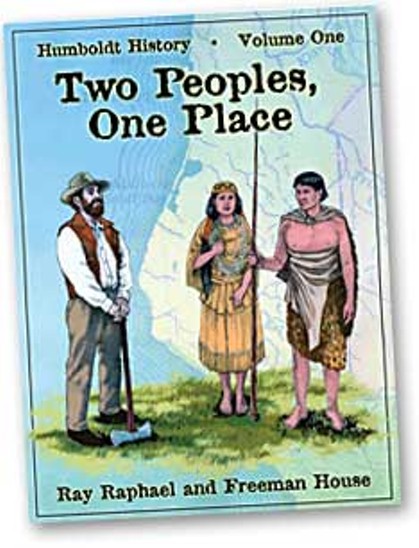
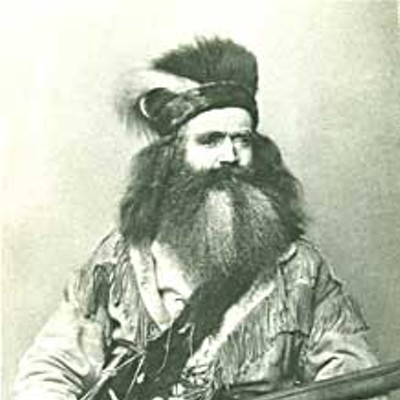

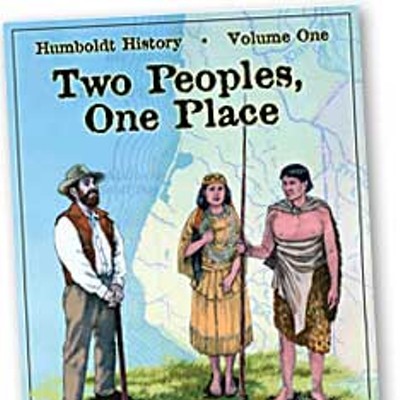
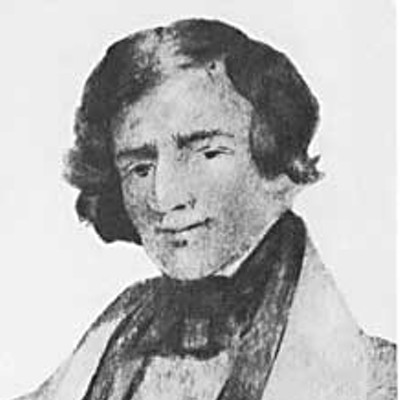
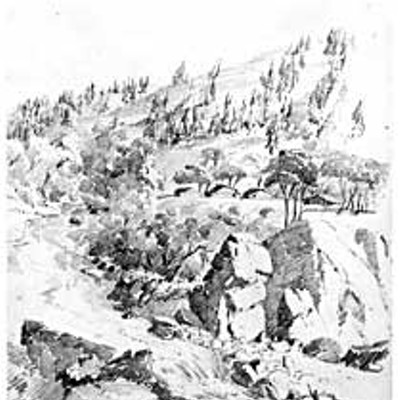
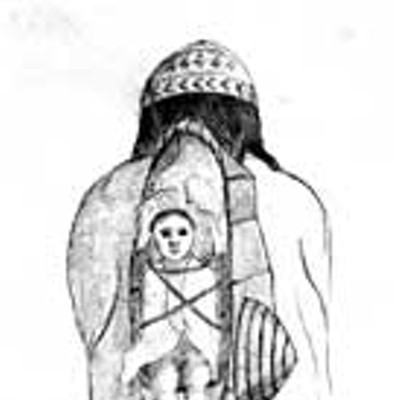
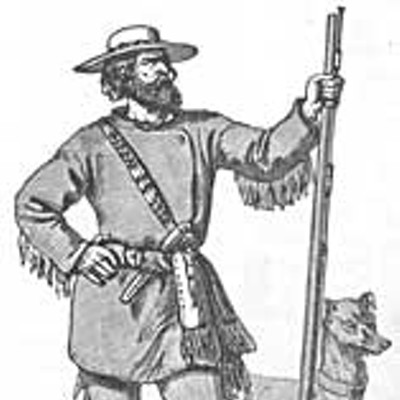
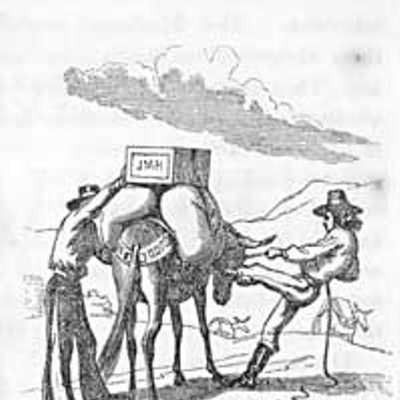
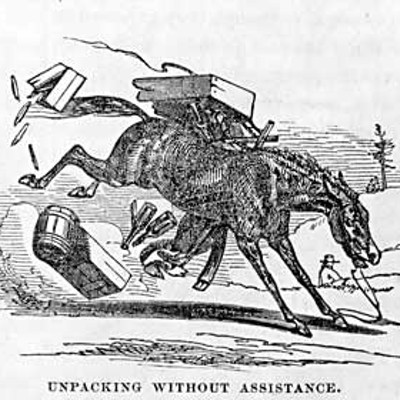

Comments